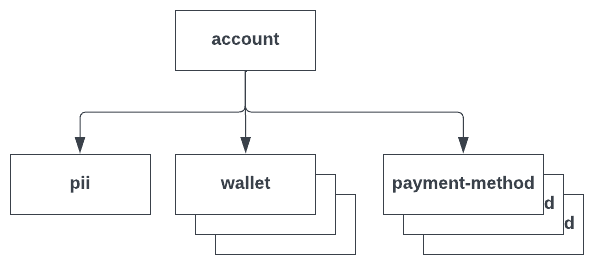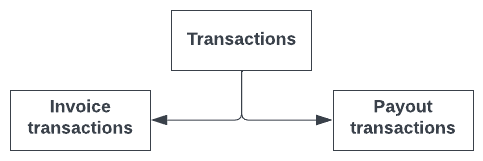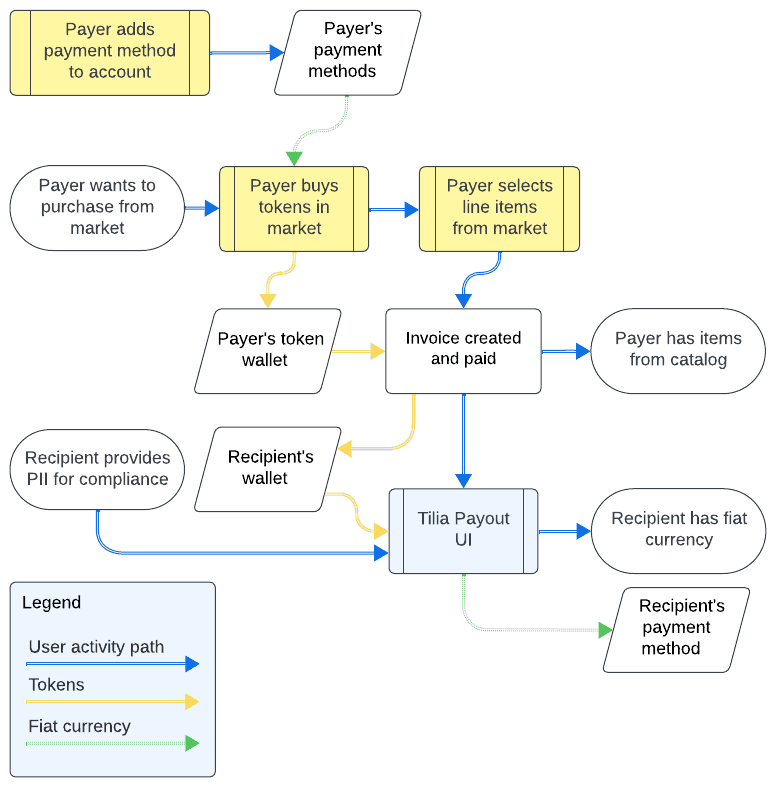Core Concepts
This guide describes the core concepts and resources used to structure Tilia API data. Understanding these core concepts and resources will make it easier to work with our resources and build integrations with the Tilia APIs.
Core resources
The core resources of Tilia services are:
-
User accounts
, which comprises:

- Account - Account resources represent end-users who wants to perform transactions such as buying or selling digital goods. Accounts include Wallets and Payment methods . User accounts also collect PII (personally identifiable information).
- PII - PII resources and processes verify user identity and keep track of a user's personal jurisdictional information to use in the calculation of local taxes and compliance.
- Wallet - Wallet resources represent the current amount of a specific type of currency or token. Each Account includes one or more Wallets . Head of State (HoS) wallets are special wallets that are associated with your organization and not linked to payment methods.
- Payment Method - Payment method resources are sources of funds that users can use in transactions. Payment method resources can represent external payment cards and bank accounts, as well as the wallets of a user's account.
-
Transactions
, which comprises:

The topics in this section go into more detail about each of these core resources.
For examples of these core resources in use, visit our Tutorials.
How the core resources work in a digital marketplace
This section demonstrates one example of how the core resources of Tilia's services work together.
In a digital marketplace, the users, that is the buyers and sellers, are represented by their user accounts. Users use payment methods to purchase tokens for their wallets. Users use wallets to manage the funds they hold in the application. The exchanges that users make in the application are described by invoices, much like exchanges in the real world. Users can receive the real-world value of their earned tokens in a payout, after providing the personally-identifiable information (PII) required by their jurisdiction.
The following diagram shows how these interactions can take place in a digital marketplace that's powered by Tilia services.

The digital marketplace is just one of many digital economies that Tilia services can support. For more examples, visit our Use-case examples.
